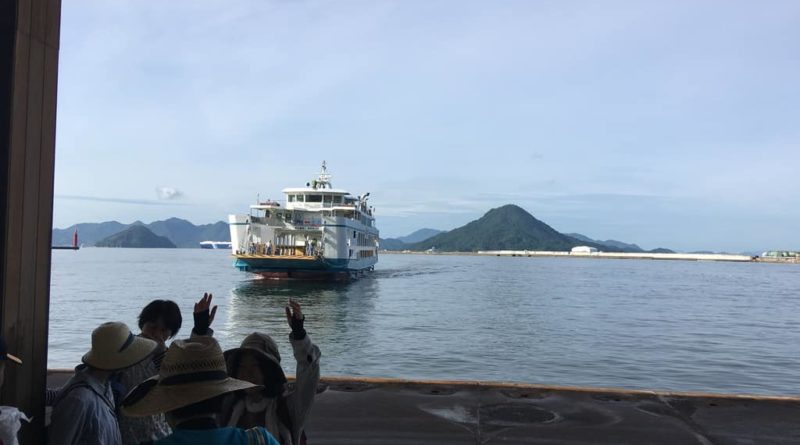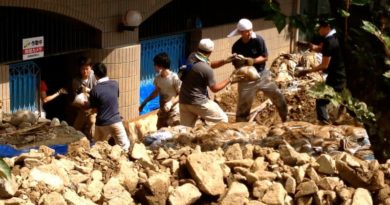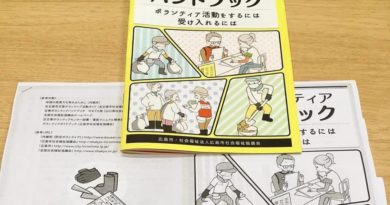Ninoshima Volunteering
If you have a little more time in a day to volunteer to help with the #hiroshima #cleanup after the #disaster, please consider helping out at Ninoshima island. The small population on the island needs a lot of help moving dirt from areas that cause problems for them to retain a good quality of life.
First time volunteers should have a look at this English Volunteering Handbook. Or see a list of the pages of the English Handbook for Landslide Disaster Volunteering here on Inbound Ambassador.
Here is an informal chat interview with my volunteering partner Jamie about our Ninoshima volunteering experience. English Volunteering Handbook
We caught the 7:30 ferry from Hiroshima’s Ujina Port with over 100 other volunteers. There was free passage for anyone volunteering, but you will have to pay a little if you want to take a bicycle or car (you don’t need it). Regular passage fare is about 400 yen per adult. There is reasonably priced parking opposite the port facility as well as a streetcar station and bus access. From Hiroshima station it takes about 30 minutes by streetcar and 20 minutes by bus to get to the Ujina port.
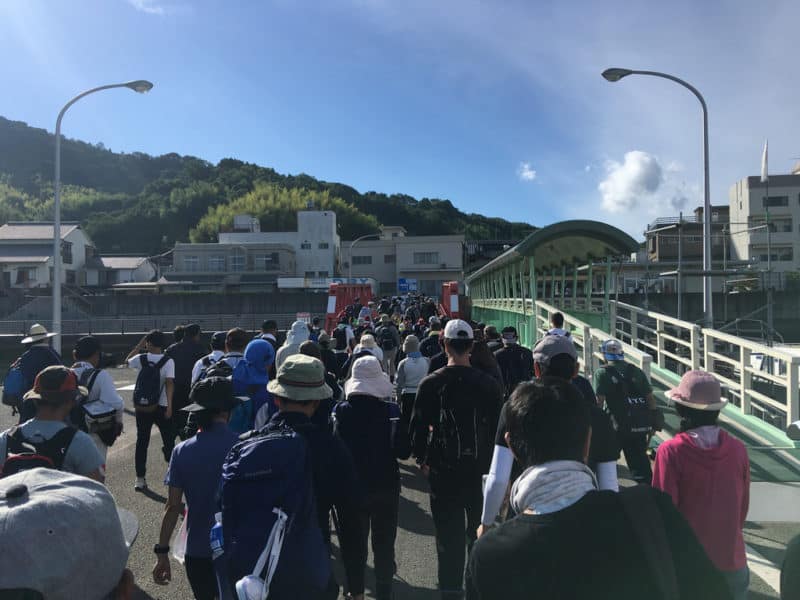
Once we arrived on the island, we followed the group for a short walk to the registration offices set up in the adjacent community center building. 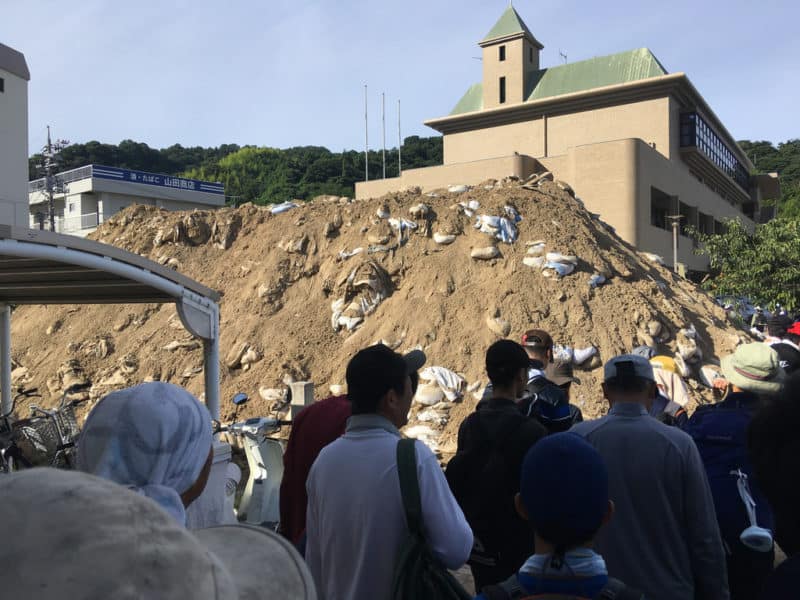
They asked us to form 2 lines: 1 for those who needed to sign up for insurance and 1 faster moving line for those who already had volunteer insurance. It’s quick and easy to sign-up for insurance and only costs 350 yen to get coverage for the year which adds an extra layer of protection to both the volunteer and the host community in case of injury or damage.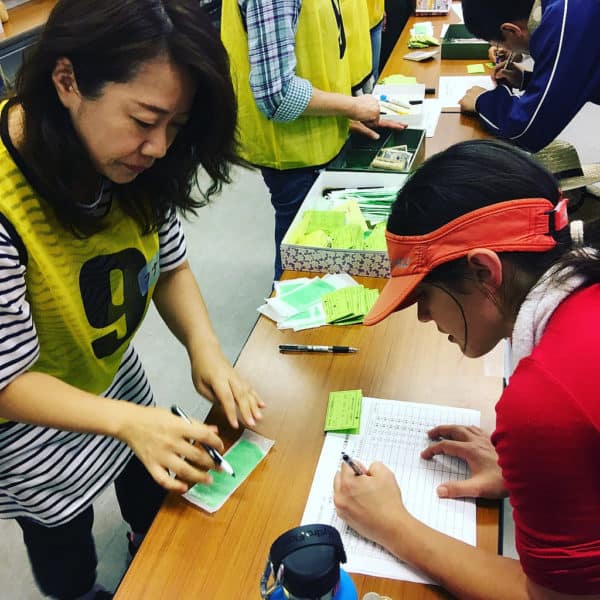
The Ninoshima Landslide Disaster Cleanup targets on the map below show 9 areas that need volunteers to help. There is a lot of work that can be done by machinery, but a lot of areas that need clearing are down small alleyways or up steep, narrow slopes where machinery access is too difficult. As female volunteers, we worked in zone D, which was located near the community center, in order to put us near the women’s toilets. 
Ferry to Ninoshima island beautiful in good weather
On a clear day, the trip over to Ninoshima is a beautiful journey across the Seto-inland sea. Usually in summer, people visit the island with bicycles to do a loop of the island, short hikes and enjoy outdoor activities at the nature center and pool. But this summer, most visitors are volunteering to help locals clean up landslide mud and debris from the 7/7/2018 heavy rain disaster.
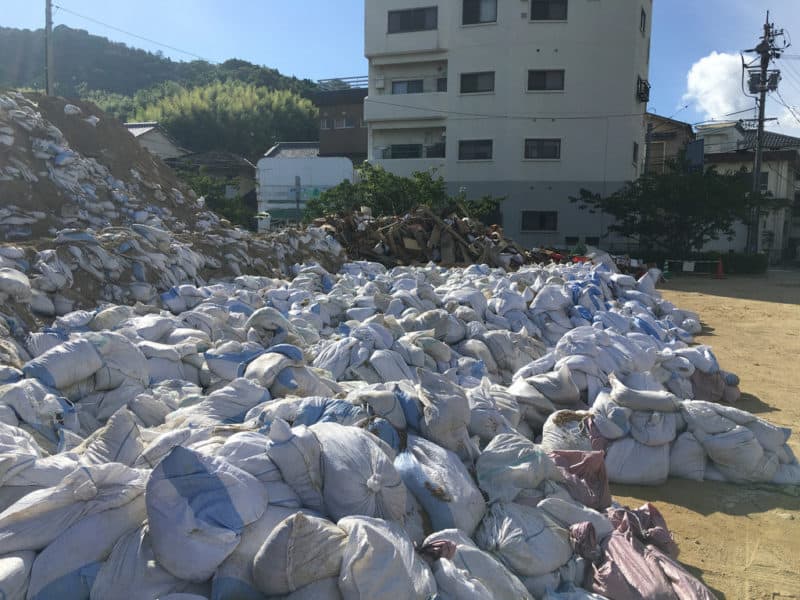
The sandbags filled with wet mud removed from streets and houses on the island are piled near the port, a reminder of the progress that has been made by volunteers to the island over the last 2 weeks. There is, however, still so much more to be done. Local staff told us how they have been happy to welcome international volunteers.
According to local staff, a group of fifty German volunteers went to the island in the first week which was a welcome boost of morale for island locals who were feeling overwhelmed. Interestingly, the famous German cake, Baumkuchen, was invented by Karl Juchheim (a German baker captured in China) who was kept on the island as a prisoner of war. It has become world famous since opening a local bakery selling the distinct ‘wrapped cake’ during the post-war period.
Overall, there was a fantastic welcoming community and volunteers organization on Ninoshima island for #cleanup #volunteering from damage of 7/7/2018 #hiroshima heavy rains & landslides. Registration open everyday 8-9am, it is possible to buy insurance on site (350 yen), or show your own insurance card for quicker processing. In July and August, all work must finish by noon due to risks of heatstroke. There are free ferry rides for volunteers from Ujina port (7:30 ferry is best to arrive for the start of registration). There are Free drinks, snacks, towels & cooled waiting rooms for volunteers to use. There is some English on signs and some staff and volunteers are able to help if needed by speaking a little English. It is possible for children (elementary age an up) to volunteer with a guardian or family, but they are warned not to use shovels or do heavy lifting and should be supervised to take extra breaks.
Most volunteer work is moving mud into piles, bags, then into central areas by wheelbarrow. Work was done in groups, breaks (every 15 min) is organized by group leaders.
I would advise wearing hats, long sleeves, long trousers to protect from sun, dust, insects (horsefly, mosquitoes, wasps..). There are some cotton gloves available for use, but gardening gloves (water resistant coating) may work better and protect hands better. Some wear work boots, but most volunteers are in rubber boot or trainers (sneakers). There is no need to bring your own shovels, bags or other equipment, there is plenty to use provided by the local authority.
If you’d like to help out, please do! Even for a couple of hours, it can make a difference. There are return ferries at 10:15, 11:30, 1:00 and 2:30 which most volunteers take after all work must officially finish at noon.
#ninoshima #minamiku #hiroshima city
English Volunteering Handbook PDF gives advice in detail useful for 1st-time volunteers in Japan. Or see the post listing the pages of the English Handbook for Landslide Disaster Volunteering here.


